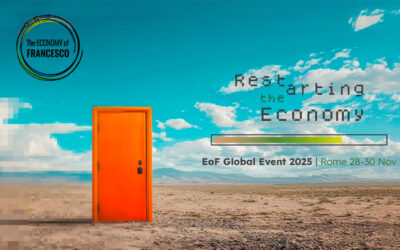
By chance I took part in a meeting on the disabled. There I met several young people who didn’t have severe disabilities but were still unable to be fully inserted in society. If it hadn’t been for their families and some associations, they would have been left to themselves. I teach in a centre for adult learning, and I understood that my school should also care for them. But in which way? I had an idea: I could teach them an old hobby of mine, how to use a photo camera.
My goal wasn’t to photograph them, but to allow them to capture some moments in their own lives. I gathered the group with their families and the adventure began. Four of them took part in the project along with four adults who were willing to help. It was September 2007.
Lesson one: how to use a simple digital camera. Homework: photographs of your house. M.G. showed me his photos: a colourful sock, the edge of an embroidered blanket, an elaborately carved doorknob. I was amazed. Timidly he told me that these were the things in his house that he liked.
This is how I learnt that my task was not to teach them something that I thought they needed to learn, but to discover and draw out what they had within them. As time passed unimaginable talents and interests began to emerge in teenagers: appreciation for detail; picture composition by a visually impaired girl, who was able to stay still for up to fifteen or twenty minutes before snapping the photo at just the right moment. Some didn’t show so much interest, but the relationship that was created among the group drew them in, and they didn’t feel excluded.
I had ventured to include wedding photos in the programme. But I didn’t know where I was going to find a couple who would be venturous enough to entrust their wedding pictures to a group of disabled teenagers. Providence allowed me to meet Matteo and Beate who wanted to leave out the extras from their wedding, including the photographer. And that’s how they found the most ramshackle band of photographers that’s ever been seen. The result was a very beautiful photo shoot with lots of originality and warmth of expression.
As the contact and friendship grew among all, so did the size of the group. One photographer whom I had asked to do something for the group thanked me for the important lesson he had received from them, having learnt that “different” is a pre-conceived notion, and how now it is not so easy for him to see others as different.
Then, with the help of a young artist, we came up with the Occhi Diversi (Different Eyes), a photo exhibition of 100 photographs, all of them beautiful and detailed, permeated with a sense of purity and passion that left a mark on many visitors. In the guestbook many expressed their gratitude at having sensed God’s love in the photographs.
None of what happened was ever planned sitting around a table. What has begun is the fruit of real and true mutual love among all the participants, several of whom do not profess religious faith. I often found myself in situations that would have required totally different skills; I was “forced” by the events to throw to the wind all the content of the training I wanted to give, in order to allow space for listening, playing, accepting a sign of affection, allowing freedom of expression; in other words, giving space to relationships.
Alberto Roccato




0 Comments